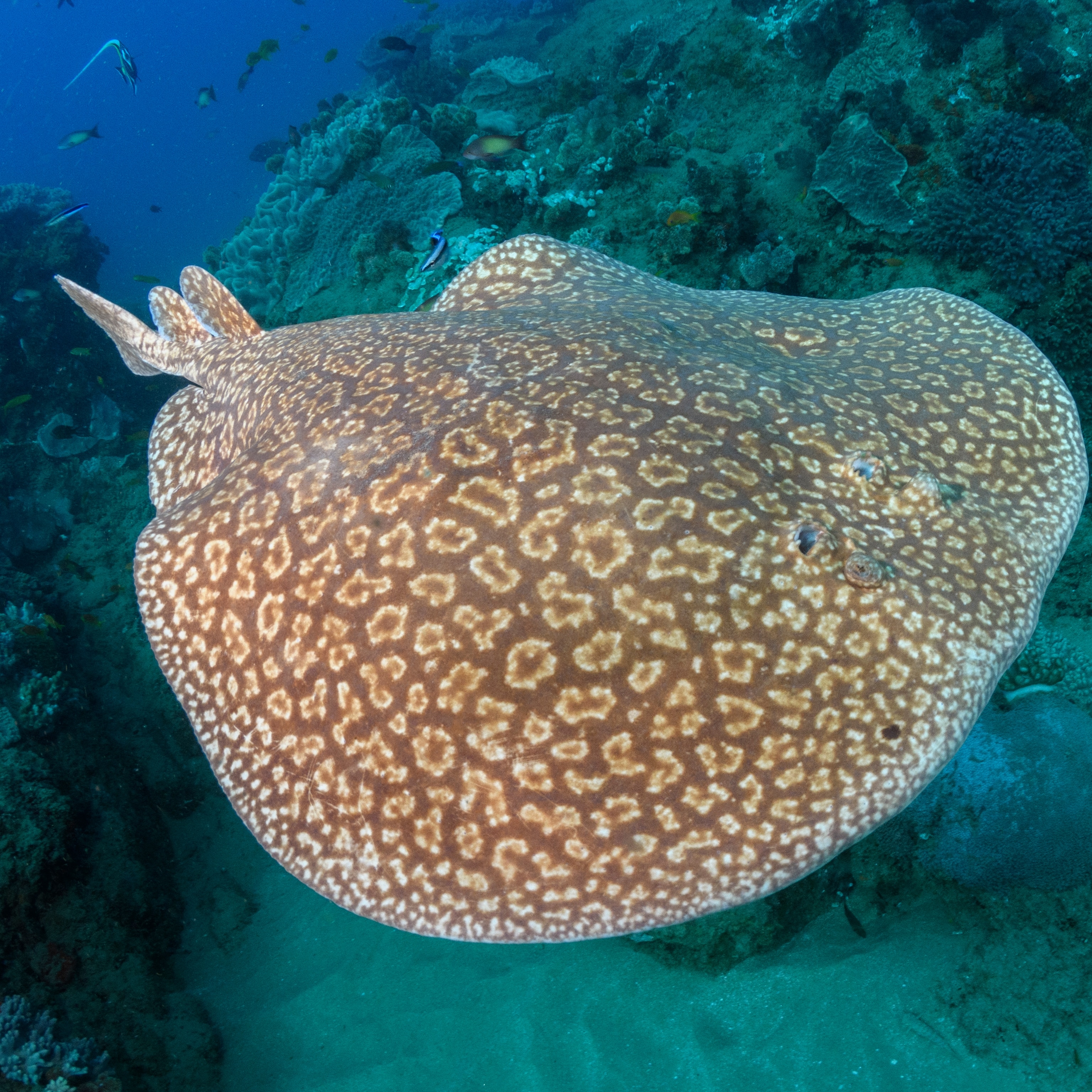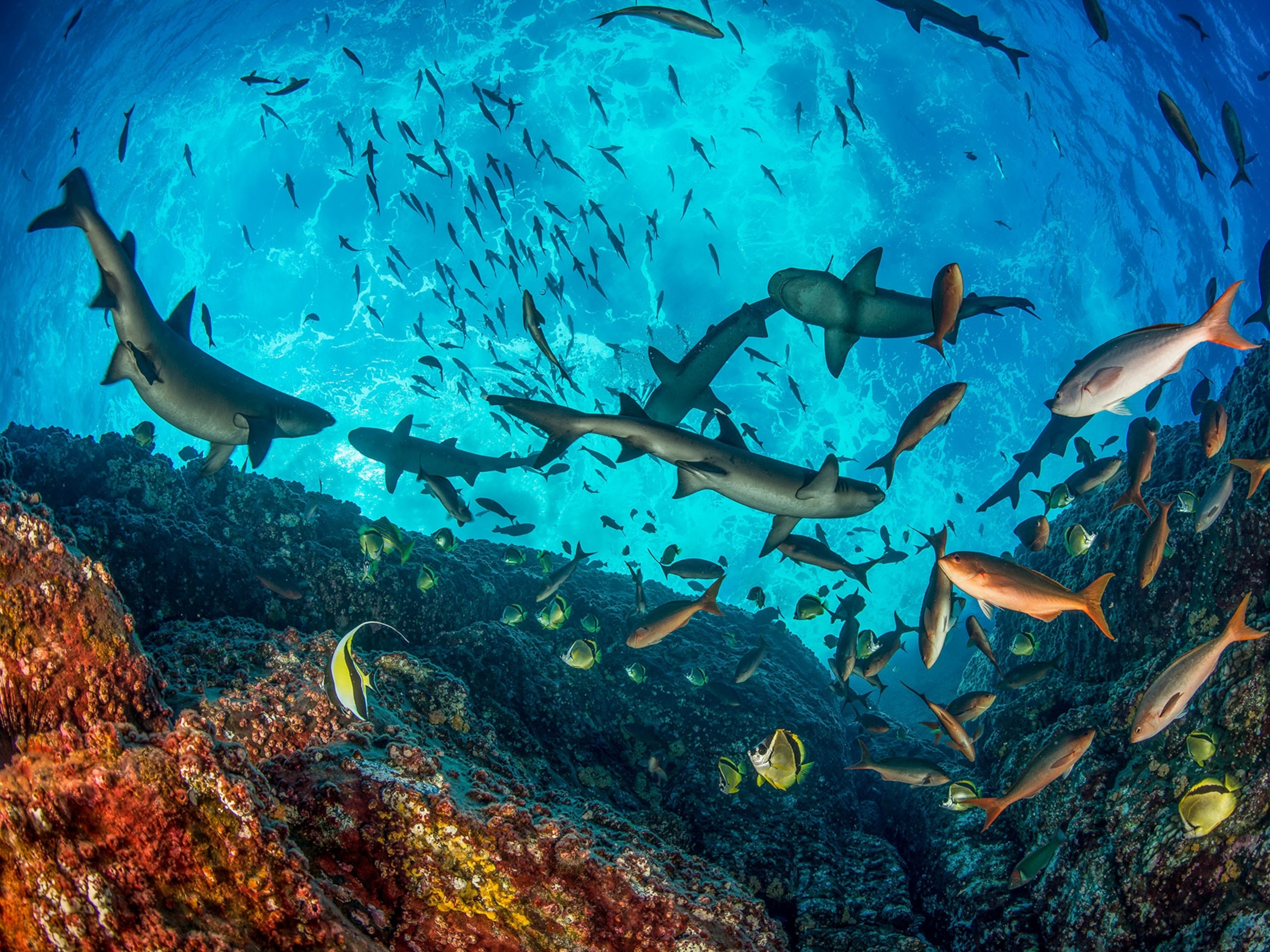Sleek, muscular bodies of sharks slice through the water—powerful predators of the ocean, striking fear in smaller fish—and sometimes humans. After extensive coverage of shark attacks on people in local and national media, readers may be left asking why there seems to be a “spike” in recent incidents. We talked to some shark experts to find out if that’s true.
Spoiler: though the overall long-term trend shows an increasing number of shark attacks, the number has actually declined in the past few years. Still, a notable difference exists in the number of recent incidents on the U.S. Atlantic coast versus the Pacific. The reasons may surprise you.
Attacks on the rise?
Most reported shark attacks are what experts consider “unprovoked,” meaning a shark apparently comes out of nowhere to bite a person, according to the International Shark Attack File (ISAF), which collects worldwide shark attack data. In contrast, a “provoked” attack results from aggravating human activities, such as grabbing or harassing a shark, or removing one from a fishing line.
Housed at the Florida Museum of Natural History, ISAF started collecting reports on shark attacks in 1958. The group has documented 6,200 accounts of shark-human incidents, including historical accounts going back all the way to the 1500s. Though ISAF reports on incidents across the globe, Tyler Bowling, the program manager, says people are much less likely to report a shark attack from a smaller country with limited phone and Internet access, or if they are engaging in risky behavior when the attack occurs.
ISAF focuses on the number of unprovoked attacks, reporting that the overall trend has increased worldwide over recent decades. The main reason, the scientists say: tourism. The human population is increasing, while more people are visiting beaches and engaging in water activities.
“You put more people in the water and you are going to get more bites,” said Gavin Naylor, director of ISAF.
But that means a person’s individual risk of a shark bite is actually decreasing: it’s down by 91 percent in a 63-year period.
Bowling suggests that popular perception of an increase in shark attacks may stem more from news bias and the ebb and flow of the news cycle than the actual numbers of attacks. The recent spate of attacks in June in North Carolina were earlier in the year than usual, which can cause panic, Naylor added.
Do sharks bite more in the Atlantic than the Pacific?
In 2018, the United States led the world with the highest number of reported shark attacks, according to the ISAF. Within the continental United States, more shark-human incidents occurred in the Atlantic Ocean—only four attacks were reported in the Pacific (three from Hawaii) compared to 27 in the Atlantic.
The reasons for the difference may be complicated, but Naylor said it is most likely due to the prevalence of shark species on the two coasts, and the strength and body sizes of those species.
In the Pacific, larger shark species—white, tiger, and bull sharks—were implicated in the reported incidents. In Hawaii, attacks by tiger sharks are the most common, whereas in California, white sharks (also known as great white and white pointer) are most likely to be involved. Globally, these species are involved in the majority of fatal attacks, contributing to their negative reputation in the media. These species tend to be territorial and if they do attack people, they may be sending a warning: get out of my space.
Smaller shark species contribute more attacks to the Atlantic Ocean tally. Currents in the Atlantic Ocean, like the Gulf Stream, can push warmer water closer to shore—with bait fish. These bait fish attract sharks, like blacktips, closer to shore.
Blacktip sharks have bitten 28 people since the 1950s (the majority in Florida), though all but one have resulted in relatively minor, and non-fatal, bites. The one exception to the Atlantic trend, says Naylor, is Massachusetts, where a few more attacks popped up in the last few years as the white shark population has rebounded since the Marine Mammal Protection Act in 1972 brought back their prey—seals.
Another factor in the distribution of shark incidents may be water temperature. Catherine Macdonald, a shark expert and director of the Field School in Miami, Florida, says more attacks do tend to occur in warmer waters, because more people spend more time playing or swimming in those waters, increasing the chances of bumping into a shark. Overall, “there is a strong correlation with people in the water and time in the water and the chance that they will encounter sharks or really any marine life,” she said.
Most victims of attacks are swimmers or surfers. That also explains why more shark incidents tend to occur in warm months, because that’s when more people pursue those activities.
Even so, in recent years, the raw numbers of shark attacks—especially fatal attacks—have been on the decline. People reported only 66 unprovoked attacks in 2018, down from a peak of 98 in 2015. Naylor points to the declining population of blacktip sharks off Florida’s coast as a contributing factor to the recent drop.
“The year’s not through, but we are half-way and it doesn’t seem to be the ‘Year of the Shark’,” says Bowling. Worldwide, 49 shark attacks have been reported—a pretty standard year, Naylor adds.
Shark bait?
Sharks don’t attack people for food, experts say.
But they can get confused. If they are chasing after smaller fish, and a person is standing or swimming among the school, a confused shark may bite human flesh. Still, Naylor puts it into perspective, saying the probability of a shark attack only increases “from incredibly tiny to two times incredibly tiny.”
Bowling notes that the shark is often just as freaked out as the human in any encounters, not being used to a human being in its environment.
Shark attacks are often “very out of character” for the animals, says Macdonald, based on her experience observing and handling them for science. She has never been bitten, though the risk exists. Of a recent fatal incident, she said, “There is no cogent behavioral explanation for what happened in the Bahamas.”
Tips to avoid shark bites
Experts say that, despite the news reports, people should not avoid going into the water out of fear of sharks. “People go in the water every day and they don’t get bit,” Bowling said.
Statistically, your chances of getting struck by lightning are considerably higher than a shark attack. In 2018, 1.24 million people died from car crashes, compared to only 130 shark incidents (provoked and unprovoked) worldwide. Fewer shark attacks were reported in 2015 and 2016 than deaths related to people taking selfies.
For a fun time at the beach, you can take proactive measures to reduce your chances of having a negative shark encounter even further:
· Don’t ever grab sharks by their tail or otherwise—even normally gentle nurse sharks will turn around and bite you if they’re afraid.
· Avoid swimming at low-light hours, like dusk and dawn, or in murky waters, when sharks have a harder time distinguishing people from tasty prey.
· If you are swimming and see bait fish, like small, silvery fish, consider getting out of the water. Sharks tend to follow these schools of fish towards the beach, and out of confusion, could bite you instead of a fish.
· Don’t wear shiny jewelry—sharks could confuse this with some of the shiny scales of their prey.
· Avoid splashing around in the water unnecessarily, as it could attract sharks.
· Do not enter the water if bleeding from a cut—sharks have an acute sense of smell.
· Always swim with a buddy so that if something does happen, you have one person that can get help. Sharks are more likely to attack a single person than enter a group of people, but this isn’t the rule.
Though some tourist-intensive locations, like Australia, have resorted to shark culling to minimize shark attacks, many experts say this isn’t a good idea, in part because sharks are often migratory. They also play important roles in the ocean ecosystem.
“Working with sharks on a day-to-day basis, one of the things that you realize is how vulnerable they are, and the extent to which we are a greater threat to them than they ever will be to us,” said Macdonald.






































